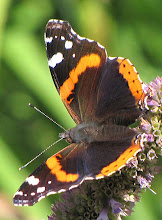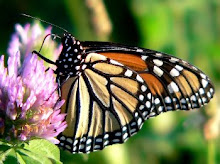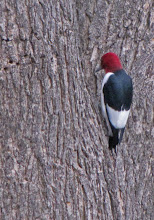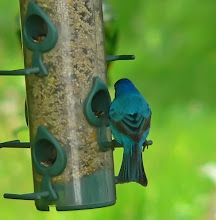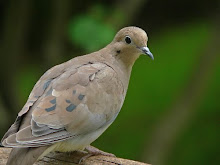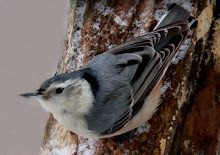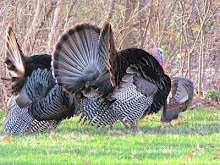Due to an illness in the family, I will remain offline for a time. I miss all my blogging friends and hope to be back soon.
Marnie
Wednesday, August 18, 2010
Monday, August 9, 2010
The only good thing about high humidity is foggy mornings. I know, fog is dangerous if you're driving but it's also very beautiful. It changes the landscape, makes familiar scenes look strange and other worldly. Beyond a visible circle, things become mysterious. Anything is possible.


Today, I'm in the middle of a bathroom remodel so I set blogger to publish this post automatically. Fingers crossed blogger works. And fingers crossed that the remodel goes well. In the past I've found that doing anything to an old house can result in disaster and chaos. We'll see.


Today, I'm in the middle of a bathroom remodel so I set blogger to publish this post automatically. Fingers crossed blogger works. And fingers crossed that the remodel goes well. In the past I've found that doing anything to an old house can result in disaster and chaos. We'll see.
Wednesday, August 4, 2010
Flowers always make people better, happier and more helpful; they are sunshine, food and medicine to the soul. ~ Luther Burbank

I planted Joe Pye in my garden three years ago. This year it has finally come into its own. The first two years, it made a disappointing showing and I considered taking it out. This year, it has more than made up for the failings of the past.

Maybe I better qualify that statement. I have two Joe Pyes, one is Little Joe pictured above. Right now, Little Joe is the star of my garden. I also have Chocolate Joe Pye which was planted at the same time. So far, Chocolate hasn't done much to repay my investment of time and real estate. For now, I'm forgetting about Chocolate and concentrating on Little Joe.
Joe Pye is usually a very large garden plant reaching eight feet in height. Tina at IN THE GARDEN featured the taller Joe Pye on her blog Wednesday. Little Joe is a smaller cultivar, which tops out a little over four feet tall and about four feet wide in my garden. I like its compact and rounded habit. There is at least one other dwarf cultivar called Phantom which is supposed to be around three feet tall. The photo below shows Little Joe blooming behind the rudbeckia and cleome.

Airy clusters of tiny lavender flowers remind me of a cross between lilacs and a smoke tree. So far there have been no pests or disease problems with my plants. I debated with myself for a while before adding these plants because of their moisture requirements. Over the last five years, I've tried to eliminate water wasters and concentrate on more xeric plants but every now and then something slips past my better judgment. Our weather was pretty dry in late May and June and Joe, who is planted in full sun, showed some wilting and required watering once a week.
Even though Joe Pye is not xeric, it was a good choice. It is both beautiful and loved by butterflies. Joe Pye begins to bloom just as the agastache and the purple coneflowers are fading so the butterflies can remain in my garden for a longer period.

The photo below is Little Joe in tight bud in early July.

Tossed, tangled, whirled and whirled above,
Like a limp rose-wreath in a fairy dance.
Like a limp rose-wreath in a fairy dance.
Thou didst not know, who tottered, wandering on high,
That fate had made thee for the pleasure of the wind,
With those great careless wings,
Nor yet did I.
~ Robert Frost from this Butterfly poem
That fate had made thee for the pleasure of the wind,
With those great careless wings,
Nor yet did I.
~ Robert Frost from this Butterfly poem
Monday, August 2, 2010
Spotlighting Agastache
Can't say enough good things about agastache or anise hyssop. It's one of the most important plants in my garden. Beautiful, carefree and extremely popular with many varieties of butterflies. Its muted lavender spires make a lovely contrast to any of the brighter colored blooms like rudbeckia, heliopsis, helenium, etc.

I have experience with two cultivars of agastache. Both seem to be hardy in my zone 5a-4b garden. Blue Fortune has recently become very popular with gardeners everywhere, and with good reason. I see it locally in most garden centers. No pests, drought tolerant, licorice scented foliage, with an extended bloom period, these plants requires no care at all and butterflies are the big bonus. There are many other varieties of agastache but most are not reliably hardy in my cold winter zone.

Golden Jubilee is the only other agastache I grow. It is very similar to Blue Fortune but has red tinged, chartreuse spring foliage. In my garden, both are middle of the border plants reaching about three feet tall (can be cut back in spring to reduce height). Golden Jubilee can be started from seed.

On my July 26 post I showed a photo of Blue Fortune with about 50 Clouded Sulfur butterflies nectaring on the blooms. Agastache blooms from late June through July and into August.
Agastache prefers well drained soil but it does not seem to be bothered by my heavy clay even during some very wet springs and summers we have had in the past. It is perfect for hills and slopes and raised beds that drain too quickly for many plants.

Wednesday, July 28, 2010
The long, hot summer
"Dirty hands, iced tea, garden fragrances thick in the air and a blanket of color before me, who could ask for more?" ~ Bev Adams
We had a very dry month sandwiched between a wet spring and a flood in late July. The heat began in March and has continued to grow worse with no end in sight. It's very surprising that the garden is not suffering a lot more than it seems to be.
The phlox are all dead headed and getting ready for another bloom cycle. The coneflowers are looking shabby so the swallowtail butterflies are finally noticing the pentas in the butterfly pots. This is a black female Eastern tiger swallowtail. Thanks to the folks on GardenWeb's Butterfly garden forum, I learned to easily tell the difference between her and her Eastern black swallowtail cousins. My July 19 post shows an Eastern Black Swallowtail male.

In the photo below Mardi Gras, a hot colored and long blooming plant that thrives in hot weather--as long as it gets plenty of moisture. In my garden it's surrounded by Rozanne which helps cool down its hot colors. So far none of the butterflies in this area have been at all interested in Mardi Gras.

This was a good year for lilies both Asiatics and Orientals. The last Oriental to bloom is always Stargazer. This year Stargazer is over six feet tall, a little unusual since they usually top out at about four feet in my garden.

This is the first bloom of Siloam Peony Display which was planted last fall. Lots of ruffled petals packed tightly into this golden daylily.

The more austere Joan Sr's first blooms create the illusion of cool. Rozanne geranium makes a good backdrop for the white flowers. Judging by the number of buds on Joan in her first year here, she will be a prolific bloomer. There aren't many blooms left on the daylilies. I always hate to see them go, the absence of their bright colors will leave holes in the late summer garden.

White Waves aren't bothered by heat or dry conditions. Petunias make the most of their brief time in the garden, never complaining they always give a hundred percent. This is my first year using Wave Petunias. They are tireless flowering machines but the colors are uninspired. Hopefully in a few more years the hybridizers will introduce some pretty shading, veining and variety.

The swamp milkweed beetle below has somehow gotten several miles from the nearest swamp:) His coloration is called 'milkweed mimicry" and it is shared by butterflies (monarchs and viceroys) and other insects that eat milkweed. Predators such as birds learn early in life that this color combination is poisonous and will make them sick if eaten.

OOPS, just realized I published this a day ahead of my usual Thursday posting day. Oh well:)
Hope you are having better gardening weather than we are here in northern Illinois. Have a great weekend.
Hope you are having better gardening weather than we are here in northern Illinois. Have a great weekend.
Monday, July 26, 2010
Summer of the Sulfurs
This has not been an especially pleasant summer. Extreme heat and now flooding over much of the area has made life a challenge for most of us. Still, this summer has brought many wonderful moments. When I look back on the summer of 2010, I want to remember it as the summer of the sulfur butterflies.

In her own mysterious way, nature somehow brought together just the right series of events to create the perfect conditions for the clouded sulfur butterfly. I have never seen anything like the number of sulfurs in my garden this year. Hundreds! Three or four butterflies on the tops of each coneflower, more on each spire of the agastache. They are on every flower and the air is filled with their yellow fluttering.

Sulfurs always keep their wings folded showing only the undersides when at rest. When in flight, the pretty black markings on the top of the wings can be seen. In the first photo, the sun shining through the delicate wing tissue gives us a hint of the black pattern.

Not the largest or the most brightly colored butterfly sulfurs are often overlooked, but when their numbers reach into the hundreds, they are an amazing sight.
Thursday, July 22, 2010
Heat, ma'am! it was so dreadful here, that I found there was nothing left for it but to take off my flesh and sit in my bones. ~Sydney Smith, Lady Holland's Memoir



 If you are trying to garden organically, you know that this little wasp is your friend because he kills caterpillars that eat your crops. But if you're trying to attract butterflies and growing plants that host butterfly caterpillars, take precautions. The wasp is public enemy number one for butterfly caterpillars. I noticed yesterday evening that my bronze fennel blooms have attracted hundreds of wasps. This would be great if I had problems with tomato hornworms or sawfly larva eating my roses. At the same time I noticed that I have no caterpillars on my butterfly weed. One or the other should go and I will be removing the blooms from the fennel tonight.
If you are trying to garden organically, you know that this little wasp is your friend because he kills caterpillars that eat your crops. But if you're trying to attract butterflies and growing plants that host butterfly caterpillars, take precautions. The wasp is public enemy number one for butterfly caterpillars. I noticed yesterday evening that my bronze fennel blooms have attracted hundreds of wasps. This would be great if I had problems with tomato hornworms or sawfly larva eating my roses. At the same time I noticed that I have no caterpillars on my butterfly weed. One or the other should go and I will be removing the blooms from the fennel tonight.
I would recommend growing fennel and letting it bloom if you have caterpillar problems. Fennel is perennial even in my zone 5a/4b garden so one plant near your tomato garden should take care of the hornworms. Butterfly host plants should be far away from the fennel or the fennel blooms should be cut off.


Cool blue sea holly makes a nice contrast to the hotter colors of the summer garden.

While web surfing for cage ideas to hold up my new baptisia, I found a really cute photo on a GardenWeb forum. The poster used old chairs with seats removed for peony cages. I know it sounds strange, but check out her pictures to see how well it works. Do a quick scroll down the page for the photos.
Another idea I've been researching is trellising for gourds. Found a page of photos on GardenWeb with lots of cattle panel tresses. My gourds are taking up way too much room. Next year they will be grown vertically to save space.
Below is the largest gourd on my birdhouse vine. There are lots of small gourds on this vine and there should be--the thing is 15' x 15', thats 225 square feet. It's climbing the viburnums and lilacs and threatening to cut off the driveway:) This weekend I will definitely have to muscle this bully back under control.

 If you are trying to garden organically, you know that this little wasp is your friend because he kills caterpillars that eat your crops. But if you're trying to attract butterflies and growing plants that host butterfly caterpillars, take precautions. The wasp is public enemy number one for butterfly caterpillars. I noticed yesterday evening that my bronze fennel blooms have attracted hundreds of wasps. This would be great if I had problems with tomato hornworms or sawfly larva eating my roses. At the same time I noticed that I have no caterpillars on my butterfly weed. One or the other should go and I will be removing the blooms from the fennel tonight.
If you are trying to garden organically, you know that this little wasp is your friend because he kills caterpillars that eat your crops. But if you're trying to attract butterflies and growing plants that host butterfly caterpillars, take precautions. The wasp is public enemy number one for butterfly caterpillars. I noticed yesterday evening that my bronze fennel blooms have attracted hundreds of wasps. This would be great if I had problems with tomato hornworms or sawfly larva eating my roses. At the same time I noticed that I have no caterpillars on my butterfly weed. One or the other should go and I will be removing the blooms from the fennel tonight.I would recommend growing fennel and letting it bloom if you have caterpillar problems. Fennel is perennial even in my zone 5a/4b garden so one plant near your tomato garden should take care of the hornworms. Butterfly host plants should be far away from the fennel or the fennel blooms should be cut off.

Finally, the long awaited tomatoes are turning red. Last year was a disaster for tomatoes all over my area but this year my plants look better than ever. For the first time in ten years I didn't plant a single heirloom tomato because they have less resistance to disease than the newer hybrids. This tomato is Celebrity, not the best tasting tomato but one of the most disease tolerant and a heavy producer. So far the leaves are perfect, no sign of spots or wilting. I have a few cut up paper leaf bags covering the ground under the tomatoes to prevent the soil from splashing onto the leaves when it rains. It's debatable if this technique helps prevent disease but it doesn't hurt and serves as a barrier against water evaporation on hot, sunny days.
Speaking of hot, sunny days.
My father is suffering from dehydration. A very serious condition that creeps up on you and makes you very, very sick. Our bodies need a lot of fluid to keep us going through this heat. Don't take chances, please drink large amounts of fluid and stay well.
Labels:
gourds,
silver skipper,
tomatoes,
wasps
Monday, July 19, 2010
The shepherd tended her phlox

Every year more tall garden phlox find their way into my garden. Hybridizers have done so much with phlox in the last few years. No longer do we need to put up with the mildew that plagues the species and earlier cultivars. The reason I like phlox so well is its long bloom period, drought tolerance, impact, and of course butterflies.
I was thrilled to find this black swallowtail in my garden Sunday afternoon.
I was thrilled to find this black swallowtail in my garden Sunday afternoon.
Here are some of the phlox blooming this summer.
Volcano White

Volcano Purple

Volcano Red

Volcano Pink

Blue Paradise

Thursday, July 15, 2010
There are two ways to live your life. One is as though nothng is a miracle. The other is as if everything is. ~ Albert Einstein
There is a garden where lilies
And roses grow side by side;
And all day between them in silence,
The silken butterflies glide.
~ Francis Turner Palgrave
And roses grow side by side;
And all day between them in silence,
The silken butterflies glide.
~ Francis Turner Palgrave
Yesterday the county to the west of us had some bad storms and a tornado siting. Our county's emergency managers got ready in case the storms came our way. Someone got a little carried away and turned on the tornado sirens. There was no storm on the horizon so some people thought we were under attack. Could have been a dangerous situation if people had panicked.
Meanwhile, as the sirens were blaring, I was following this Tawny Emperor butterfly. I have a couple hackberry trees on the farm which are the hosts for these butterflies. I've read they almost never visit flowers but this one obviously didn't read that memo.

I was told by the butterfly folks at Garden Web (who know a whole lot more than I do) that these and other butterflies will come to a plate of rotting fruit (set atop something to discourage ants and other insects). Thought I'd try setting out a plate of fruit in some sunny spot. I usually have overripe bananas, strawberries and apples.
Daylily Moses' Fire caught my eye showing some blazing red color in the late afternoon sun. This is one of those daylilies that is a little hard to place in the garden. I have it with purple coneflowers now and I can certainly testify that those two do not make a good combination:) Next year I'll move it into an area of yellows and golds to see if that is more pleasing to the eye.

About one third of my double daylily blooms, including Moses' Fire, are opening as single blooms this year. I've read other daylily growers are having the same problem but no one seems to know exactly why.
Found a garden center with three varieties of blue sage. Thought I'd try them all and see which I like the best.

Blue Frost and Black and Blue are being used as fillers in containers. They don't require a lot of space and they drape gracefully over the container rims. Last year Victoria Blue was planted directly into the garden and seemed to fade into the background. Not enough presence to stand out among the other garden plants.
So far I have seen very few bees or butterflies on any of these sages or pentas which makes me wonder... Do the growers treat their plants with systemic insecticides? They don't want chewing insects making holes in the leaves of the plants they plan to sell. They also probably don't want bees hanging around the garden centers and frightening the customers. Has anyone else noticed pollinators avoiding annuals grown and sold at large garden centers?

This is an unusually good year for coneflowers. In the past a few of them have been plagued with some type of wilting disease but this year they are healthy and thriving. Coneflowers, phlox and agastache are the three main butterfly attractors in my garden so I wouldn't be without any of them.


These tomatoes have been just sitting like this for weeks. I always get so impatient for homegrown tomatoes this time of year. Every morning I carefully study them for signs of blushing. I'm buying some at the local farmer's market tonight. Can't stand this waiting any longer.

Could it be true a watched pot never boils and a watched tomato never ripens:)
Have a wonderful weekend everyone and try to stay cool.
Monday, July 12, 2010
Everything looks better with moonbeams
A good friend gets up with you at 6am and follows you out to the garden just to keep you company.

Everything looks better with moonbeams.
One of my favorite garden plants is Moonbeam coreopsis. I like its short height and long blooming period to cover bare spots and hide the ugly ankles of taller plants. It blooms over such a long period that it can be counted on to keep the garden interesting while other plants come into and go out of bloom.





Don't know what's up with this aster. Last year it bloomed in September.
Thank goodness for telephoto lenses! Who would want to get down eye to eye with this fellow to get a good closeup.


Yesterday one of his tiny relatives jumped under my foot as I steped down onto the walkway and I almost lost my balance trying to avoid stepping on him. I won't claim to like toads but I'm trying hard to tolerate them because they're good little organic bug catchers.
This monarch butterfly's wings are showing her age. Hopefully she left some eggs on my butterfly weed.

Subscribe to:
Comments (Atom)












